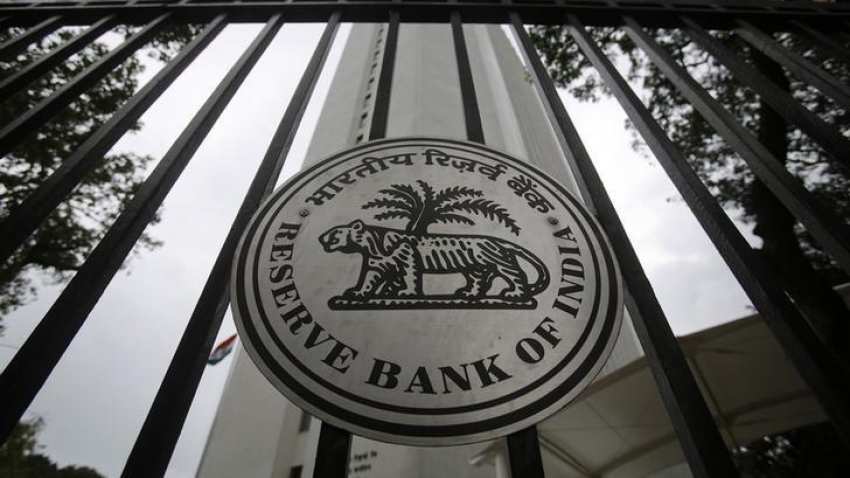Analysis: India chooses between a falling rupee and a banking cash crunch
The Reserve Bank of India (RBI) faces a tough choice in how it uses its monetary muscle. Does it protect a fragile rupee or does it ensure there`s enough cash in the banking system so lending in the economy doesn`t dry up?

The Reserve Bank of India (RBI) faces a tough choice in how it uses its monetary muscle. Does it protect a fragile rupee or does it ensure there`s enough cash in the banking system so lending in the economy doesn`t dry up?
The RBI needs to pick one battle at the expense of the other, while also acknowledging that either choice leaves apart of economy vulnerable.
If it defends the rupee, Asia`s worst performing currency this year, it risks sucking massive amounts of rupees out of an economy already grappling with tightness in cash and unintended policy tightening.
The alternative is to let the rupee weaken past 70-per-dollar to record lows, eroding confidence and investment in an economy heading into general elections next year.
Economists suspect it may choose currency stability, regardless of how tight funding conditions get, a point the RBI reinforced on Wednesday when it raised rates and emphasised containing inflation as a priority.
"It is a tough balancing act for RBI to keep the rupee stable while maintaining a neutral liquidity stance," said A Prasanna, chief economist at ICICI Securities Primary Dealership.
"The fact that RBI raised the rate once again proves that they are serious about inflation targeting and comfortable with growth. That is why they might actually let the liquidity deficit build on, so that it is in line with its anti-inflation stance."
Such a decision, however, presents plenty of challenges for policymakers who are concerned about funding constraints in Asia`s third largest economy.
The primarily inflation-targeting central bank has sold almost 5 percent of its foreign exchange reserves since April, trying to put a floor under the rupee. The currency is down 7 percent this year.
As it sold dollars for rupees, cash conditions domestically have tightened and yields have jumped.
Rates on 3-month deposits that banks place with each other have risen 100 basis points since April.
That`s led to a rise in retail deposit rates, with the State Bank of India lifting some of its deposit rates by around 60 basis points on Monday.
At the same time, the RBI`s bond purchases, part of its money market operations, have been modest and done little to help bank liquidity.
A second major factor impacting cash supplies is the Indian tendency to stockpile cash, rather than bank it, a practice that picks up in the second half of the year as people keep money aside to spend on the festive season.
Bankers estimate that a slow drain of rupees could result in the banking system having a daily deficit of about one trillion rupees, which is about 1 percent of bank deposits, by March 2019 from a daily surplus of 300-400 billion rupees in June.
"Lending rates could rise by 50-75 basis points going ahead as liquidity is expected to tighten sharply and that could hit consumption demand to some extent," said Parthasarathi Mukherjee, chief executive officer at Lakshmi Vilas Bank.
"Given that we are headed towards a festival season when credit offtake will be higher, it will be useful if RBI provides banks with some more liquidity."
The RBI did not respond to request for a comment. At a press conference on Wednesday after announcing its monetary policy, Deputy Governor Viral Acharya said the RBI will "actively" manage cash conditions.
Spread between India`s bulk deposit rate and repo rate https://reut.rs/2LyiRTF
To ease funding conditions, economists say the RBI needs to either cut back its currency intervention or conduct heavier open market operations, such as bond purchases from banks, to replenish the rupees.
But such bond-buying operations would make it cheaper for the government to borrow more, which would be inflationary and at odds with the central bank`s efforts to fight price pressures.
WATCH ZEE BUSINESS VIDEO HERE
The RBI`s biggest challenges will be if tighter funding hurts an economy that`s been expanding at an annualised pace above 7 percent, one of Asia`s fastest.
Analysts think it ought to be doing more, if not through bond purchases then by unwinding forward holdings in dollar swaps to release funds.
"The onus on RBI is really in some form of quantitative easing," said Sanjay Mathur, chief economist for Southeast Asia & India at ANZ in Singapore.
"I expect RBI to stick to its neutral stance on liquidity and not move to a tight stance, which means it will leave adequate amount of liquidity to contain any sharp rise in interest rates or bond yields," Mathur said.
($1 = 68.6550 Indian rupees)
Get Latest Business News, Stock Market Updates and Videos; Check your tax outgo through Income Tax Calculator and save money through our Personal Finance coverage. Check Business Breaking News Live on Zee Business Twitter and Facebook. Subscribe on YouTube.
RECOMMENDED STORIES

Fundamental picks by brokerage: These 3 largecap, 2 midcap stocks can give up to 28% return - Check targets

SBI Senior Citizen Latest FD Rates: What senior citizens can get on Rs 7 lakh, Rs 14 lakh, and Rs 21 lakh investments in Amrit Vrishti, 1-, 3-, and 5-year fixed deposits

Tamil Nadu Weather Alert: Chennai may receive heavy rains; IMD issues yellow & orange alerts in these districts

SIP+SWP: Rs 10,000 monthly SIP for 20 years, Rs 25 lakh lump sum investment, then Rs 2.15 lakh monthly income for 25 years; see expert calculations

Top 7 Mutual Funds With Highest Returns in 10 Years: Rs 10 lakh investment in No 1 scheme has turned into Rs 79,46,160 in 10 years

SIP vs PPF: How much corpus you can build in 15 years by investing Rs 1.5 lakh per year? Understand through calculations

Retirement Planning: Investment Rs 20 lakh, retirement corpus goal Rs 3.40 crore; know how you can achieve it
01:33 PM IST










 Municipal corporations need to enhance own sources of revenue: RBI report
Municipal corporations need to enhance own sources of revenue: RBI report India at forefront of digital revolution, says RBI Dy Guv Patra
India at forefront of digital revolution, says RBI Dy Guv Patra RBI issues framework for reclassification of FPI to FDI
RBI issues framework for reclassification of FPI to FDI RBI unlikely to go for immediate rate cut, despite inflation likely to cool: Ind-Ra
RBI unlikely to go for immediate rate cut, despite inflation likely to cool: Ind-Ra RBI ups domestically-held gold by another 102 metric tonnes in April to September
RBI ups domestically-held gold by another 102 metric tonnes in April to September